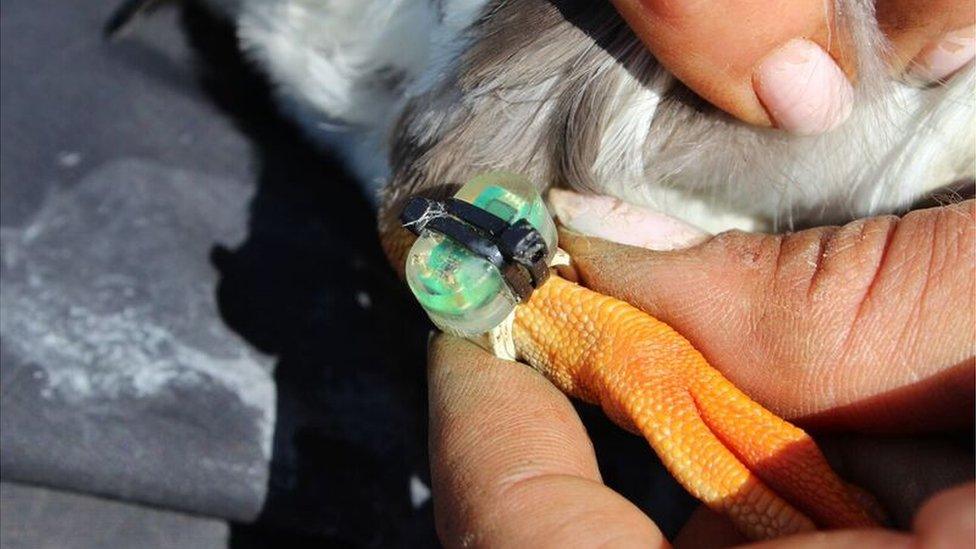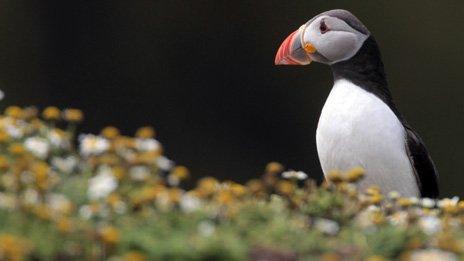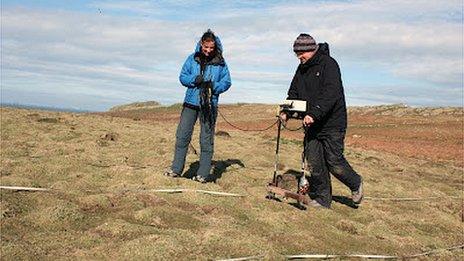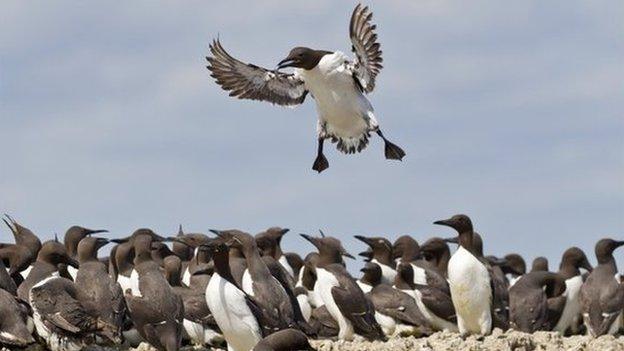Long-term partners help Skomer Island puffins breed
- Published

Puffins are known for known for their monogamous pairings
"Soul mate" pairing helps puffins from Pembrokeshire to breed more, university researchers have shown.
The study, published in this month's edition of Marine Ecology Progress Series, looked at whether 12 pairs of Skomer puffins stayed in contact over winter or migrated separately.
It found they tended to separate at the beginning but followed similar patterns and synchronised their return.
Oxford University researchers said this behaviour would help breed more chicks.
The team fitted miniature tracking devices to 12 pairs of Atlantic puffins breeding on Skomer Island.
Their migratory movements and behaviour were tracked over six years.
The team also found females were more likely to forage than males, helping breeding success as females were able to lay eggs earlier and better rear pufflings.

Until recently tracking devices were too big to use on small birds like puffins
Dr Annette Fayet, lead author of the study, said: "The recent miniaturisation of tracking technology means we can now study the at-sea movements of puffins and other small migratory seabirds remotely over months and even years."
Complex analytical techniques can also be used to show not only where the birds go but what they do at sea.
"This will help us study seabirds' at-sea ecology and behaviour, which is currently poorly understood," added Dr Fayet.
"The result will also be invaluable for the conservation of seabirds, which are currently threatened by ocean pollution and over fishing, making them the most endangered group of birds on the planet."
- Published16 April 2017

- Published12 December 2014

- Published2 October 2014

- Published4 July 2014
